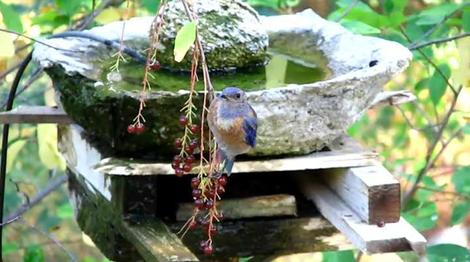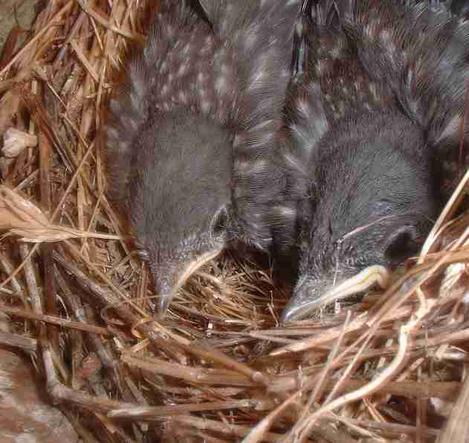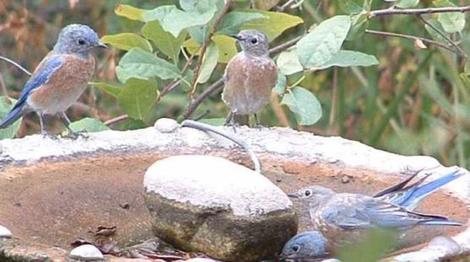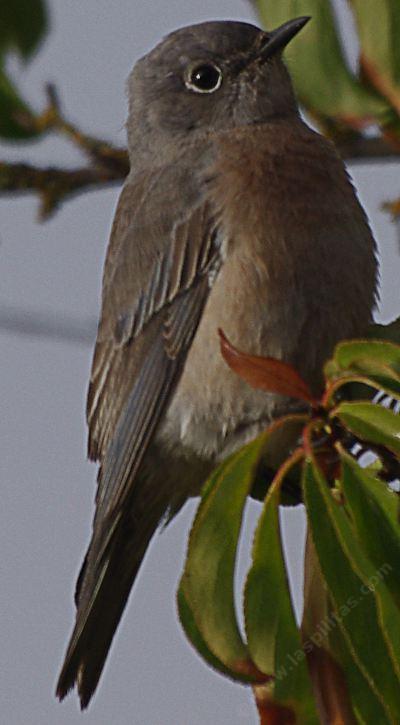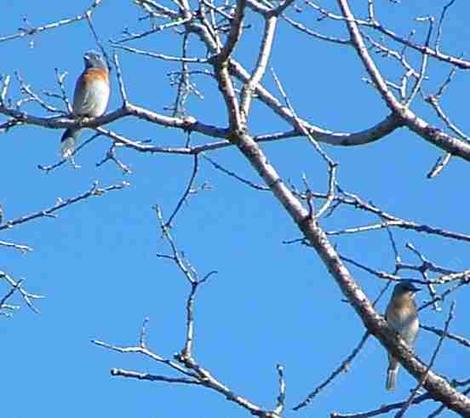Western Bluebird, Sialia mexicana
The Western Bluebird is a delicate little bird with a charming personality. It has the characteristic eye ring and rufus breast of the thrush family. It is not as bold as an American Robin. It has a temperament similar to that of the Hermit thrush, but occasionally gets irritated by other birds. Niche filled by the Western Bluebird
The Western Bluebird is a secondary cavity nester that feeds on many common garden insect pests. Migration of the Western Bluebird
The Western Bluebird moves out of the Higher elevations in the winter. Some move into the southwestern desert and northern central
The Western Bluebird is a secondary cavity nester. That is, it uses a nest that was excavated by another bird in a previous season. This is usually an old woodpecker cavity. However, they will also use a bird house. The Western bluebird like the Eastern Bluebird is forced out of many nesting areas by the European Starling. The European starling is a very aggressive secondary cavity nester. It will even push baby birds of other species out of their nest and take the nest for themselves.
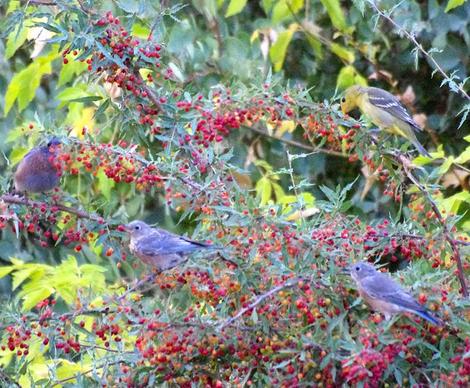
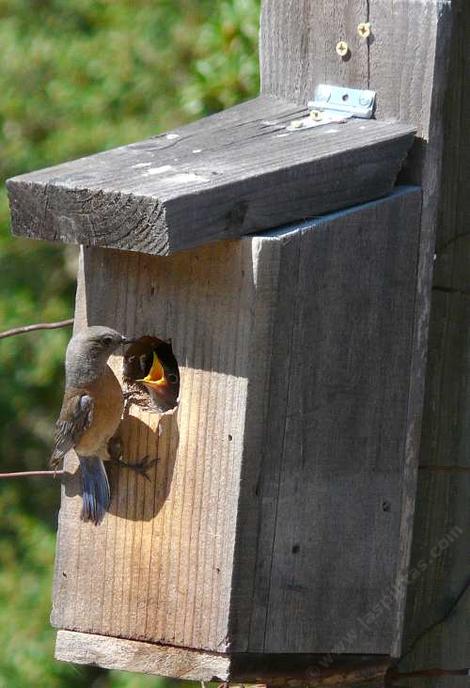
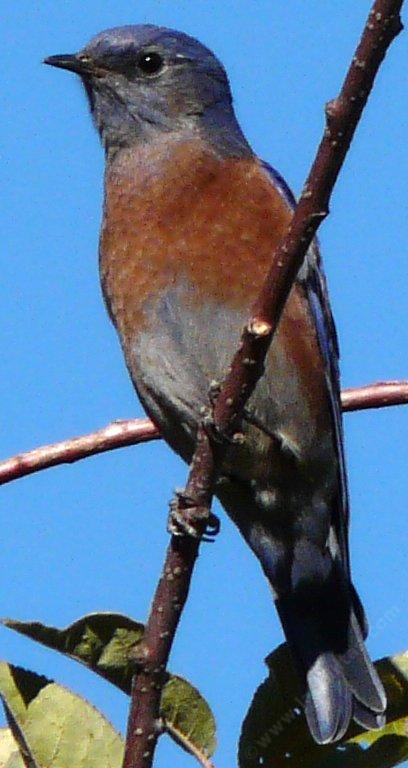
Diet of Western Bluebirds
The Western Bluebird eats insects, earthworms, snails, Poison oak berries, and other small berries and fruits. In our garden the Western Bluebirds eat Elderberries, Mahonia nevinii, Black Chokecherry, Western Chokecherry, Southern California Grape, Redberry and Toyon. The Bluebirds tell one and another, sometimes 20-30 birds are in one bush at a time.
Planting bushes with berries also helps attract the Western Bluebird to your garden. Their favorite plant in our garden is Mahonia nevinii. This is a prickly shrub that grows up to about 5 ft tall. It has yellowish berries that turn red as they ripen. It is evergreen and quite attractive.
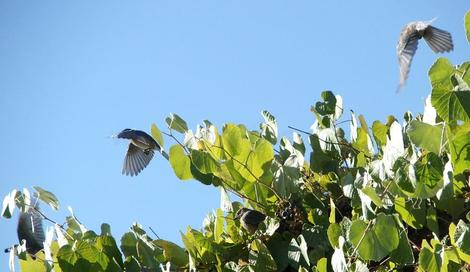
How to attract the Western Bluebird to your garden
The Western Bluebird often will occupy an area because of its availability of nest sites. Building a nest box in your garden will greatly enhance your chances of attracting these birds. If you build your nest box with a smaller entrance hole, the European starlings will not take them.
Habitat/Plant communities used by the Western Bluebird
The Western Bluebird prefers open woodlands with water available. They use oak woodlands as well as coniferous forests and riparian woodlands.
Range of the Western Bluebird
The Western Bluebird is found in most of California except in the deserts and the south central valley in summer.
The Western Bluebird also enjoys using the bird bath. They will drink as well as bath in it.
